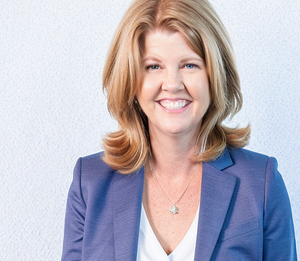How many of you over the course of your professional lives have ever worked on a project where it wasn't particularly clear what the finish line looked like? 🙋🏻 This malady is everywhere – including in your own business.
Project Scoping isn't "telling people what to do" (which I know you're slightly sick of). It's "painting a picture of what Done looks like" so the folks doing the work know what to build and deliver to you. It's about being transparent with the constraints and desires you have about what the finished project should look like.
The Document:
Next Up:
I suggest watching this video next:

The Transcript:
Project Scoping Tradecraft: Now, when I speak from stage, I lead off this topic with a quick audience question and I ask how many of you over the course of your professional lives have ever worked on a project where it wasn't particularly clear what the finish line looks like, nearly all the hands go up. And there's more than a few smirks. Back when I worked in Silicon valley,
this is a long, long time ago. Once a quarter, our whole QuickBooks team would spend a day at a housing site with habitat for humanity. There was one day where half of us were putting in insulation and the other half were hanging drywall. And on the carpool home that day, my coworker, who was one of the most talented marketers I had ever worked with,
he was saying how happy he was, how satisfying it was to work at that job site. And I asked why. And he said, because I knew where I was on that wall project. I knew when I was half done. And I knew when I was done and I never feel that way at work just a couple of years ago, this big federal study came out.
That looked at a huge number of projects in the government sector and concluded that the number one cause of project failure is not identifying what it looks like to be done. And before we can all say, well, that's typical of the government. After that article was published, there were a number of spinoff articles in the weeks after where other industries copped to the same problem.
This problem is everywhere, including our own businesses and the businesses of my clients. How does this even happen? Well, again, it comes out of our solo days when we were the chief doers and our businesses, and we followed our noses. We have a sense of where we were headed, but we more or less figured it out as we went and rolled with our own changes.
And that habit serves us very well or it had in the past, but it is not a habit we can move forward with, not if we want to scale our team and our business. When we aren't clear about what we're looking for, we need to be consulted with frequently. This is the death by a thousand cuts that we all complain about, or we successfully butt out.
But we're disappointed in the results that our team brings us, which brings me to my one thing, be clear about the features and the functioning required for your project. So there is a sweet spot that you will learn that sets criteria and describes constraints, but also leaves room for creative, innovative work. So let's get to the best practices, best practice.
Number one, for project scoping shape and delineate your projects. Number two, enroll others into your vision. This is one of the hardest shifts of any that we talk about in the whole course, which is getting your vision, your expectations Out of your own head and into the heads and hands of others, and three, using a design brief to communicate your expectations and to put them in writing.
So let's do this one by one shape and delineate your project. So I'm using that word deliberately and I've highlighted it delineate it's drawing, align, planting a flag. You're going to hear me use all of those metaphors that really stake a claim about what it is that you're building. What does it look like to be done when you're building it? So again,
we want to remember in the previous lesson, we talked about short well-defined projects and I get the question sometimes. Well, what is short? Is it short enough is this is what I'm planning too long, the duration of your project, how long it takes you to build it. Isn't really the point. What I'm trying to get us in the habit of is short and well-defined as opposed to me and during,
and I'll know it when I see it. So short is contrast to meandering it. I just want it to be a well-defined and succinct, and then we need to be intentional. We need to negotiate what done looks like with our team, and then we need to document it. So intentional means, make sure that you're focusing on the needle, movers,
the features and the functioning that will actually move the needle are the features and the functions that should be described as you scope your project, you should negotiate it with other experts on your team, whether they're experts in operations, whether they're experts in the piece of software needed, or they're experts in being the people who have to carry out your vision and they need to be brought along and in their opinions need to be heard and help shape what it looks like to be done.
Then we're going to document it. We're going to get to all of that. The second best practice is a big shift. That's required for growing businesses, with a growing team and that's for the CEO to make the switch, to be able to get the visions and expectations out of their heads and into the heads of others. So this is bottleneck central,
since you aren't executing alone anymore, the only way to grow is to get others, to execute, execute with you. So when you don't, it's your destiny to touch a project constantly. As people check in with you about the course they're trying to take. So creatives may have a hard time with this concept. They're used to creating for themselves and maybe even coasting others to articulate their visions so that they can bring them to life.
But when the roles are reversed, there's so often a strong point of view. That's not articulated well, but it's very much in play and creatives. Haven't cornered this market. Either non creatives have a problem, too. This is a skillset that must be up-leveled in order to grow. Here's the good news though. This skill is very much in the visionary toolkit.
You must find a way to enroll people into your vision. Now, one of my mentors, Jennifer Kim uses this phrase, it's her phrase, enroll others into your vision. And she uses it as an alternative phrase for selling. So if people who are skeeved out by the idea of selling, she wants us to think about it as enrolling others into our vision.
It's perfect for that use, but I'm appropriating it for us. And it is an alternative phrase for scoping a project so that you can delegate it effectively, because if the phrase is perfect for that too, it puts the ownership back in its proper place on the CEO. And it taps into the place where we love to be, which is visioning. So here's what you must do.
You must find a way to communicate your expectations transparently so that other people can do the work of execution. Now, if you're wondering how in the world do you do that? I lay out some ideas in a separate video in this lesson called dun RX. And it has some best practices, which I swiped mostly from design thinking, which is a whole discipline that's built around,
designing for innovation and problem solving. So be sure to check out that video. And the third best practice is use a design brief to communicate explicit expectations. So when it comes down to brass tacks, using something like a design brief removes the risk by making expectations visible, and it becomes a criteria that you and your team use to judge, are we done yet?
And it also serves to remind you what criteria you signed up for. So what did you say was inbounds? What did you say was out of bounds? It's almost a contract between the vision setter and the vision executioners as to what it is together they have decided to go off and do. So the first thing you need to do is plant that flag.
What is in and what is out. You need to communicate what you want. No, no clairvoyance allowed. This is a discipline to get you to put words to paper and to get other people, to be able to agree to it. So we're documenting the bargains that we strike with our team about what, what is in a project and what is outside of project.
This is also where you want to make sure that everything that's in on a project has earned its way into the brief. So it's like a needle moving review. You want to make sure that all the needle movers are accounted for whether you're intentionally counting them in the project or your saving them for a later phase or deliberately saying no. So what is a design brief?
You ask, there is a separate video that walks you through it. And a few examples. So this is what it looks like a prompt wise, but I also have a video and exam and full examples that I walk through. So you can get an understanding of what we're talking about. There's also those done are ex best practices video, which helps you answer that question.
How can I define done when I don't even know it myself? So that is an honest question. So, so often we're not vague because we're trying to be up to we're vague because we don't know how to get clarity without that. I know it when I see it mentality. So that very much is a skill that we need to learn and put into play and done.
Our X will help you with that. Then we get to our homework. So the homework is to go back to your project list and begin to create design briefs for each of the projects on the list, major or minor. And I would like you to get in the habit of no design brief, no project, no project should creep onto your calendar unless there is a filled out,
agreed upon design brief for it. Now, clearly that can be a work in progress design briefs aren't created on the spot. They're created with some dialogue with your team. So when you put a project on the schedule, I'd like you to initiate the conversations that will lead to the design brief, and you really should put that date in your calendar. So that time hasn't passed too much before you actually know what it is you're working for.
So that is project scoping. Please go check out those other two videos and then the worksheets.
Next Up:
I suggest watching this video next:










Member discussion